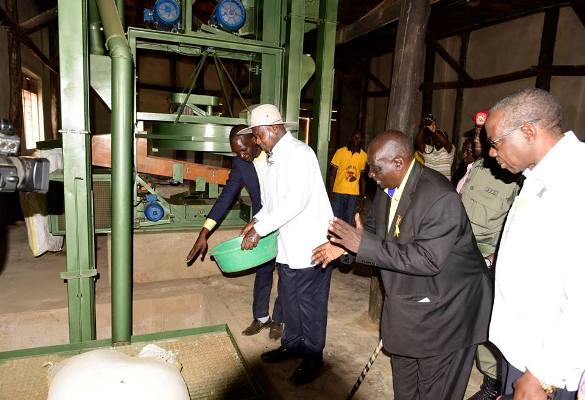The Bank of Uganda (BoU) has revealed that Uganda’s economic activity slowed down in 2019 due to slowing global activity and domestic factors.
“The BoU’s high frequency indicator of economic activity, the Composite Index of Economic activity (CIEA),points to a moderation of economic activity since the beginning of 2019,” BoU Governor, Prof. Emmanuel Tumusiime-Mutebile said Monday while issuing the Monetary Policy Statement for December 2019.
He added: “The moderation of domestic economic growth has been driven by both slowing global activity and domestic factors. Indeed, in the first 10 months of 2019, tourism receipts are estimated to have grown at a lower rate and merchandise exports, excluding gold and re-exports, contracted reflecting moderating external demand.”
On the domestic scene, Mutebile said moderation of domestic demand conditions could also have contributed to the slowing of economic activity.
“Going forward, a combination of persistent global geo-political tensions and uncertainty around trade policies and softening domestic private sector investment spending could generate headwinds to economic growth,” he said, adding: “In addition, public sector financing needs have risen amidst limited fiscal space, raising the prospect of further pressure on the domestic borrowing costs.”
Overall, Mutebile explained, economic growth is projected to be in the range of 5.5-6.0 percent in 2019and the pace sustained into 2020.
“This projection remains subject to downside risks, mainly stemming from uncertainties in the global economy. Over the medium term, monetary and fiscal impetus is expected to support stronger GDP growth. As a result, private sector investment will increase, providing additional support to the economic growth outlook.”
The Consumer Price Index (CPI) data for November2019,released by Uganda Bureau of Statistics (UBOS),indicates that inflation remained subdued.
However, annual headline and core inflation rose to 3 percent and 2.9 percent, respectively from 2.5 percent and 2.6 percent in October2019. The increase in inflation was in part driven by higher food crop prices, and Energy, Fuel and Utilities (EFU) prices.
Food crops inflation increased from minus 0.9 percent in October 2019 to 0percent in November2019, while EFU inflation rose to 7.4 percent in November 2019 from 5.1 percent in October 2019.
“A relatively stronger shilling and subdued domestic demand contributed to moderation of the increase in inflation. The inflation outlook remains unchanged from the October 2019 forecast round. Annual core inflation is projected to remain below the 5 percent target until the fourth quarter of 2020,” Mutebile said.
However, the risks to the inflation outlook in the near term (12 months ahead) are assessed to be largely on the upside.
“Due to unpredictable weather patterns, food price inflation remains uncertain. A further upside risk to the inflation outlook is capital flow volatility which could put pressure on the exchange rate. On the downside, demand pressures remain subdued. Nonetheless, inflation is forecast to converge to the target of 5 percent in the medium-term (2-3 years),” Mutebile said.
Against the above background, the Central Bank decided to keep the Central Bank Rate (CBR), a benchmark lending rate for commercial banks, at 9 percent in December 2019.






